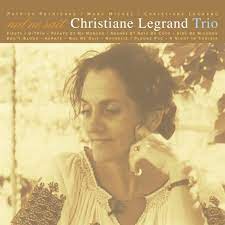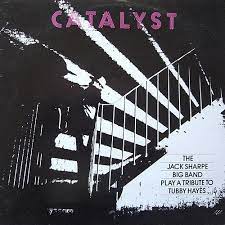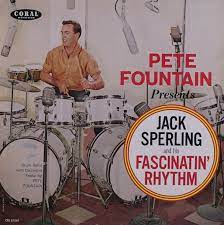
Daily Dose Of Jazz…
Lou Colombo was born on August 22, 1927 and raised in Brockton, Massachusetts. He began playing trumpet in the 1940s, at age 12. Aftere serving in the Army band in World War II he had hopes of playing professional baseball, saw him signed to the Brooklyn Dodgers, but a broken ankle forced him to curtail that dream. He then formed his own band in the 1950s and toured with Buddy Morrow, Perez Prado, Dick Johnson and the Artie Shaw Orchestra. He also played with Dizzy Gillespie and Louis Armstrong during his career.
So he dove into music and his trumpet. His career included stints with the Charlie Spivak and Perez Prado bands and the Artie Shaw Orchestra. On Cape Cod, Lou’s gigs with Dick Johnson and Dave McKenna were legendary, as is their superb Concord album, I Remember Bobby, a tribute to Bobby Hackett.
Known for his one-handed trumpet style, he was a mainstay in the Cape Cod, Massachusetts jazz scene for more than six decades and maintained a home in Fort Myers, Florida. Trumpeter Lou Columbo, who also played flugelhorn, baritone horn and pocket trumpet, transitioned unexpectedly at 84 on March 4, 2019 in a car crash in Fort Myers after making a turn and his vehicle was struck by another.
More Posts: bandleader,history,instrumental,jazz,trumpet

Daily Dose Of Jazz…
Christiane Legrand was born on August 21, 1930 in Paris, France. Her father Raymond Legrand was a conductor and composer renowned for hits such as Irma la douce. She studied piano and classical music from the time she was four and was discovered by jazz critic and composer André Hodeir in 1957. She became the lead singer in the most notable French jazz vocal groups of the 1960s, including Les Double Six.
She was the original lead soprano of The Swingle Singers and was the vocalist who dubbed the part of Madame Emery in Les parapluies de Cherbourg, the music was composed by her brother Michel Legrand. She also sang the part of Judith in his Les demoiselles de Rochefort. Christiane had several commercial recordings over the course of her career.
Legrand sang the lead role on the French Disney recording of the score to the film Mary Poppins in 1964 and lent her talents to numerous other film projects. She was the featured soprano on the track “Fires (Which Burn Brightly)” on the 1973 Procol Harum album Grand Hotel.
Soprano vocalist Christiane Legrand transitioned on November 1, 2011.
More Posts: bandleader,history,instrumental,jazz,music,vocal

Daily Dose Of Jazz…
Jack Sharpe was born on August 19, 1930 in London, England. He began playing tenor saxophone at age eighteen. He played with Vic Lewis and Teddy Foster in the early 1950s and freelanced in the London area.
While working as a taxi driver in 1953 he played with Dizzy Reece in 1954, then in Tubby Hayes’s band the following year until 1956. Jack played with Mike Senn in the Downbeaters after 1957, worked further with Hayes, and led his own sextet in 1958. He went on to promote and book other musicians.
In the early 1970s Sharpe managed a nightclub where he led the house band on weekends. By 1975 he had left music intermittently to continue driving a cab. He returned to jazz in 1985, playing with Alan Branscombe and leading a Tubby Hayes tribute band.
Tenor saxophonist and bandleader Jack Sharpe, who was mainly active on the London jazz scene, transitioned on November 4, 1994.
More Posts: bandleader,history,instrumental,jazz,music,saxophone

Daily Dose Of Jazz…
Jack Sperling was born on August 17, 1922 in Trenton, New Jersey. In 1941 he played with trumpeter Bunny Berigan. After World War II, he and Henry Mancini joined the Glenn Miller band when it was led by Tex Beneke. Drawing attention with his performance on the song St. Louis Blues in 1948, he then joined Les Brown and His Band of Renown, which played regularly for the Bob Hope radio program.
Sperling and other members of Brown’s band joined Dave Pell’s octet in 1953, recorded with the octet on Plays Irving Berlin and The Original Reunion of the Glenn Miller Orchestra. From 1954 to 1957 he was a member of Bob Crosby’s Bobcats. During the rest of his career, he worked in bands led by Charlie Barnet, Page Cavanaugh, Pete Fountain, and Benny Goodman.
He was among the studio musicians who accompanied Henry Mancini on the television show Peter Gunn. Jack recorded with him on the film soundtracks Charade and Days of Wine and Roses. He was the featured solo drummer on the theme song for the TV show Hogan’s Heroes and from 1959 to 1972 he was under contract with the NBC Orchestra. He worked on The Tonight Show Band, Rowan & Martin’s Laugh-In, and TV variety shows hosted by Bob Hope, Dean Martin, and Andy Williams.
In the music world, he recorded with Rosemary Clooney, Bobby Darin, Sammy Davis Jr., Doris Day, Ella Fitzgerald, The Four Freshmen, Lena Horne, Peggy Lee, Elvis Presley, Frank Sinatra, and Mel Tormé.
Drummer Jack Sperling, who was a big band and studio musician, transitioned on February 26, 2004.
More Posts: drums,history,instrumental,jazz,music

Daily Dose Of Jazz…
George Morrow was born on August 15, 1925 in Pasadena, California. After leaving the military he played with Charlie Parker, Sonny Criss, Teddy Edwards, Hampton Hawes and other musicians who were in Los Anegles, California. He then spent five years from 1948 to 1953 in San Francisco, California often appearing at the Bop City jazz club and working with Dexter Gordon, Wardell Gray, Billie Holiday and Sonny Clark, among others.
During the mid~1950s he recorded five albums with Sonny Rollins and at the end of the decade two with Sonny Stitt. He had been free-lancing around San Francisco clubs when Max Roach and Clifford Brown hired him to play with them after having rejected two other bassists. He appeared on all of the studio albums made by the Clifford Brown-Max Roach Quintet.
After the band dissolved due to the deaths of Brown and Richie Powell in a car accident, Morrow continued recording with Max Roach’s band. He also worked with Anita O’Day in the 1970s before joining the Disney World house band in 1976.
Bassist George Morrow, who never led his own recording date, transitioned on May 26, 1992 in Orlando, Florida.
More Posts: bass,history,instrumental,jazz,music


